How AI is saving time and improving care at Canada’s largest MS clinic
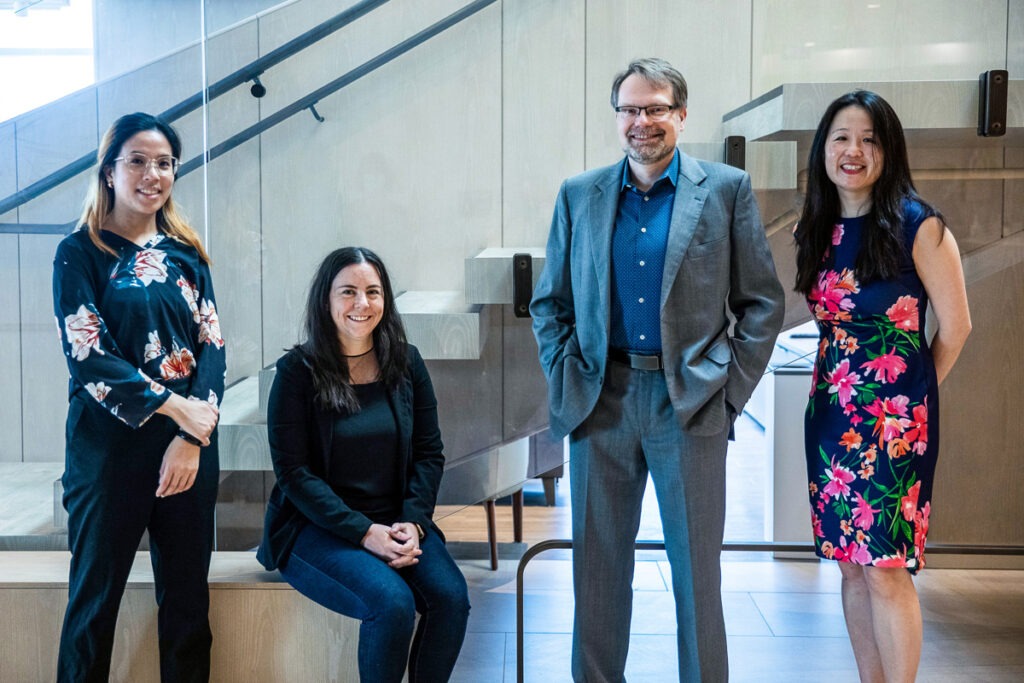
An AI-powered tool in Canada’s largest Multiple Sclerosis (MS) clinic is integrating tens of thousands of patient notes into individualized patient histories, saving countless administrative hours for staff and doctors and freeing them to focus on what matters most: the people in their care.
MS is an autoimmune disease that can impact vision, memory, balance and mobility. People who have MS can experience times when their symptoms are more severe and periods when they have few or no symptoms. It can also be progressive, meaning that symptoms get worse over time.
“MS is a disease that lasts decades. Often when a clinician is seeing someone for the first time, they have ten or more years of medical notes to go through,” says Dr. Jiwon Oh, clinical director of the BARLO MS Centre at St. Michael’s Hospital. “The goal of MuScRAT is to – in a quick snapshot – summarize a person’s relevant clinical history in MS.”
Neurologists and other staff in the BARLO MS Centre at St. Michael’s Hospital are using MuScRAT, which stands for Multiple Sclerosis Reporting and Analytics Tool, to get quickly up to speed on new patients, prepare for upcoming appointments and plan next steps in their care. The tool is an example of the partnership between Unity Health’s Data Science and Advanced Analytics (DSAA) team and clinical teams at the network, which has developed more than 40 AI tools since launching in 2016. The DSAA is one of the first applied artificial intelligence (AI) departments in a Canadian hospital and operates using a unique model that brings together healthcare providers, data scientists and data and software engineers to build AI solutions and put them into action.
We connected with some of the people behind the MuScRAT tool to learn more about how they created it and how it works:
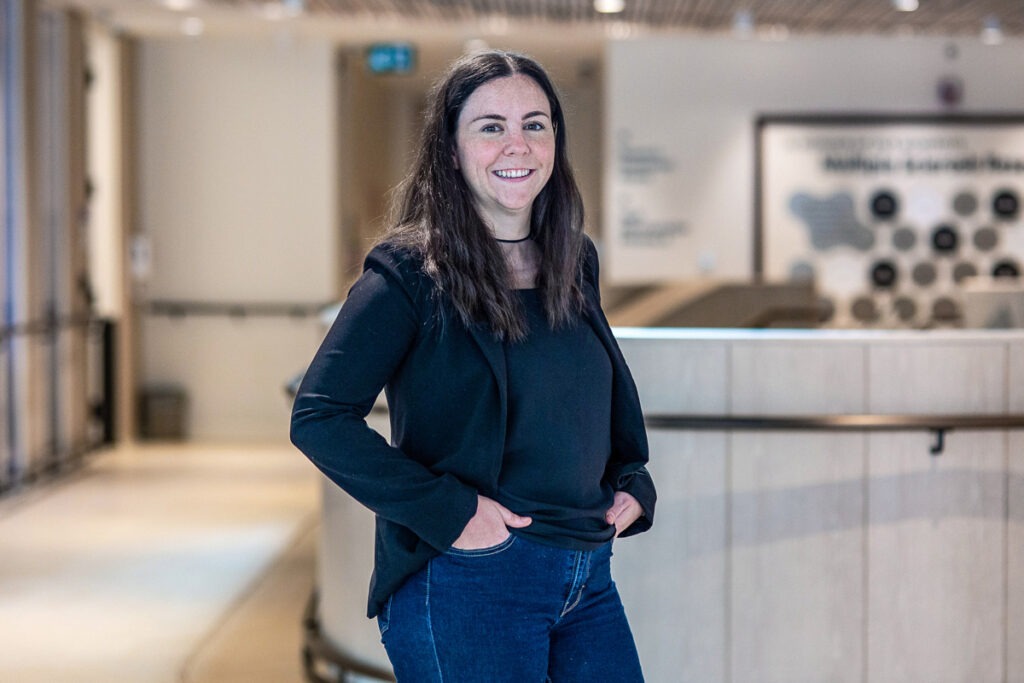
Ashley Jones – Building a database from the ground up
Ashley Jones joined the MS program at St. Michael’s as a research assistant in 2015 to develop the MS Clinic Registry, a centralized database for the nearly 9,000 patients the clinic follows. She began working with the DSAA team to see how AI could be used to help ease the burden of data entry for the registry, which was an entirely manual process.
“Entering data is very time consuming, very labor intensive and – because we have a large volume of patients at the clinic – it was challenging to keep the registry up-to-date,” says Jones.
One of the key data points used to create individual patient timelines in MuScRAT is the Expanded Disability Status Scale (EDSS) score, a value used to measure and monitor a patient’s level of disability due to MS. Jones worked closely with the DSAA team to translate her method for evaluating clinical notes to determine a patient’s EDSS score so the AI tool could mimic her process.
“Creating the algorithms came very naturally,” says Jones. “I have a very algorithmic way of looking at things, even without knowing it, so it worked really well.”
Jones enjoyed her experience working with the DSAA team so much that she went back to school to get her master’s in health informatics and joined the DSAA team as a project manager in January 2023. In her new role she oversees AI projects with the MS team, along with projects in other clinical areas.
“I wanted to learn more and gain experience in project management,” says Jones. “It’s expanding my field, but also going back to my roots with MS. I really enjoy that I’m still able to work with Dr. Oh and the MS team.”
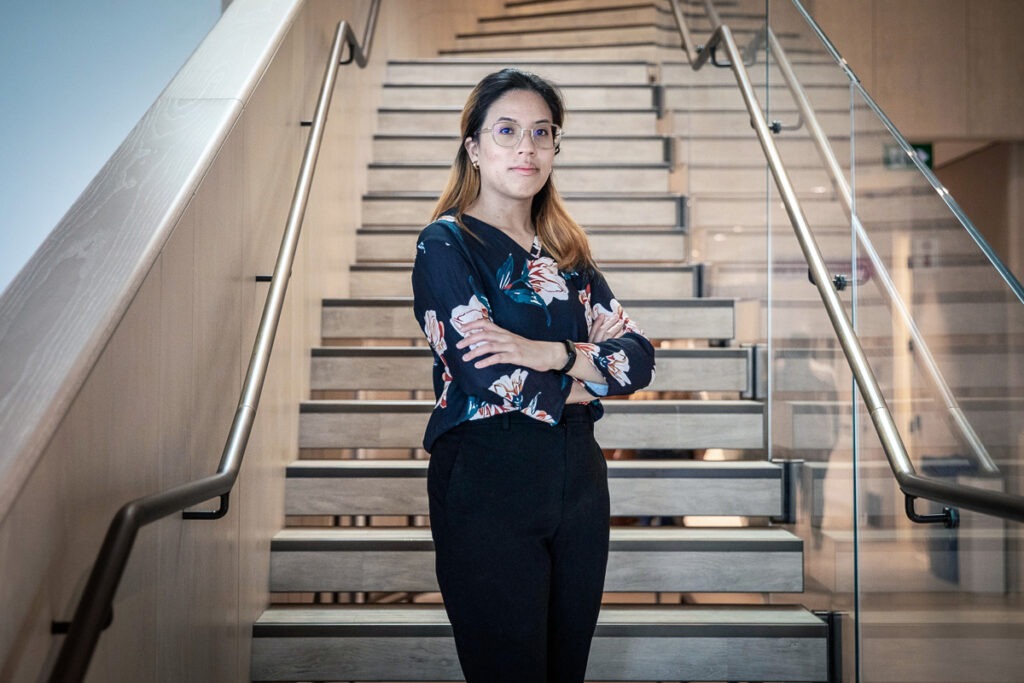
Chloe Pou-Prom – Developing algorithms that make a difference
Chloe Pou-Prom is a data scientist with the DSAA team at Unity Health. She is one of the data scientists who helped develop the algorithms for MuScRAT.
The tool uses two main sources of information to create patient timelines. The first is the previously mentioned MS Clinic Registry database. The second is clinical notes on the MS clinic’s electronic medical record.
“Our role as data scientists on this project was to create AI models to help augment the existing database,” says Pou-Prom. “When a clinician wants to look at a patient’s history, we can pull the existing information from the database but it might be missing more recent data.”
MuScRAT uses natural language processing – a type of AI that interprets language in speech or text to complete a task – to add the most up-to-date data. In this case, the tool interprets the text of clinical notes from patient appointments and physical exams and populates a timeline for each patient, saving countless administrative hours for staff and doctors.
Pou-Prom also notes the important role of software developers on the DSAA team in creating the dashboards and interface for AI tools. They help to ensure that data appears to clinicians and hospital staff in a way that is intuitive and easy to understand.
One of Pou-Prom’s favourite things about being a data scientist at Unity Health is how her work is put into action.
“I like that I can work on projects that people actually use,” says Pou-Prom. “Clinicians are using the tools we develop in their everyday decisions. I think that’s really cool.”
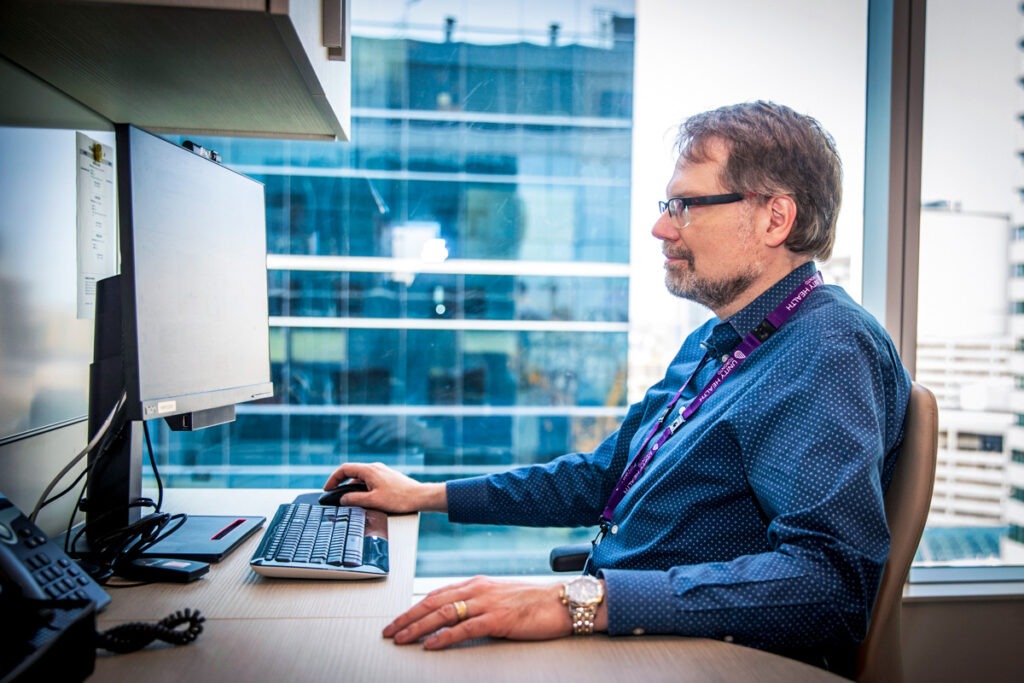
Dr. James Marriott – Putting the tool into practice
Dr. James Marriott is a neurologist with the MS program at St. Michael’s. He also does MS research and runs the centre’s clinical trials program for new MS treatments. He joined the team in October 2022 and – while he wasn’t involved in the development of MuScRAT – he has become an avid user.
“I’m taking on care for some people who we’ve been following for years or decades or more,” says Marriott. “Having a synopsis of how they’ve been treated and how they’re responding to treatment up until now has been useful.”
Without MuScRAT, Marriott would need to go through each patient’s electronic medical records to map out their disease history and prepare for their appointment. This would involve sifting through individual clinical notes and files – a tedious and time-consuming process.
While Marriott will still review documentation in the electronic medical record when needed, MuScRAT saves him time by streamlining the process significantly.
“It’s helpful for discussions with patients that I’m meeting for the first time,” says Marriott. “I hope it’s also helpful from the patient perspective that I’m able to get up to speed sooner and can focus more on getting to know them as people, and on the next steps in their care.”
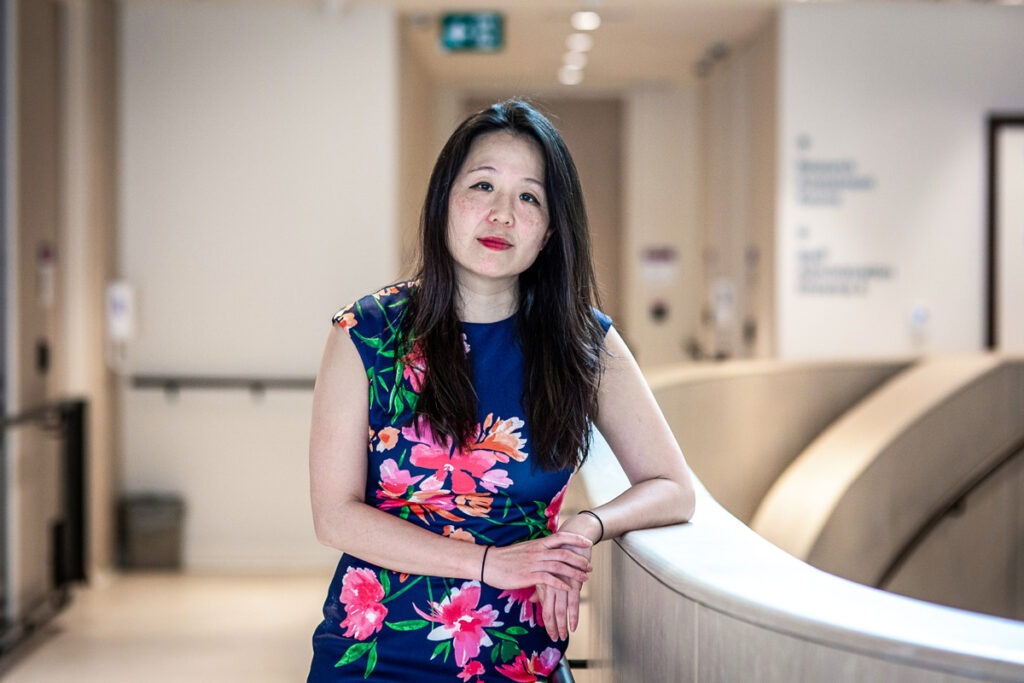
Dr. Jiwon Oh – Creating a vision and looking forward
Dr. Jiwon Oh is the Medical Director for the BARLO MS Centre and a world-renowned MS researcher. Her role on the MuScRAT project was helping the team vision what the new tool could achieve and providing clinical input throughout its development.
When she and her team began working with the DSAA team their goal was to improve and build upon the centre’s existing database.
“We recognized that our existing database and records were really difficult to use, and we wanted something better,” says Oh. “We also wanted to look at what could we do with the registry data to improve clinical care.”
Oh sees the potential MuScRAT has to help her team be even more efficient and proactive going forward. For example, the centre has a number of drug access navigators who support insurance applications when patients need a new drug treatment. These team members use MuScRAT to find information and manually complete this paperwork. Now they are working with the DSAA to automate parts of this process so patients can get faster access to the treatments they need.
They’re also looking at AI models that will help clinical staff anticipate a patient’s future care needs.
“Our goal is to apply AI to try to predict: who are the patients that are at high risk of developing a relapse in the next year or two? Who are the patients that are at high risk of developing neurological progression?”
By Robyn Cox; Photos by Eduardo Lima
